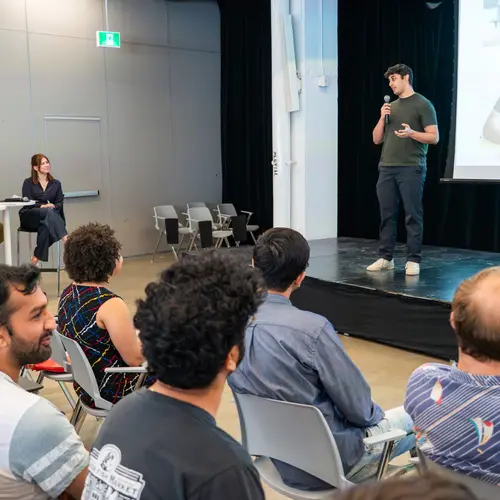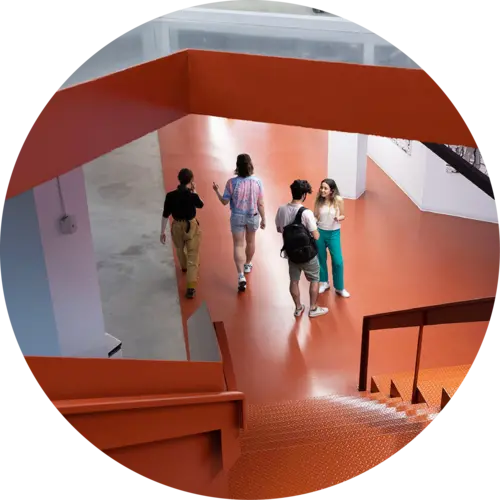Antoine Dionne
Majeed Al-Zakri
Hubert Labelle
Julie Joncas
Baron Lonner
Ali Eren
Patrick J Cahill
Peter Newton
Liisa Jaakkimainen
Teresa To
Maryse Bouchard
Sarah Hardy
Dilani Thevarajah
Rajendra Sakhrekar
Ayesha Hadi
Andrea Doria
Aya Mitani
Andrew Howard
Samuel Yoon
Tracey Bastrom
Amer Samdani
Marjolaine Roy-Beaudry
Marie Beausejour
Rachelle Imbeault
Justin Dufresne
Stefan Parent
Jessica Romeo
Holly Livock
Kevin Smit
James Jarvis
Andrew Tice
Vivien K. Chan
Robert Cho
Selina Poon
David L. Skaggs
Geoffrey K. Shumilak
Brett Rocos
Juan P. Sardi
Anastasios Charalampidis
Jeff Gum
Peter S. Tretiakov
Oluwatobi Onafowokan
Jamshaid Mir
Ankita Das
Tyler Williamson
Pooja Dave
Bailey Imbo
Jordan Lebovic
Pawel Jankowski
Peter G. Passias
Yousef Aljamaan
Vishal P. Varshney
Ramesh Sahjpaul
Jill Osborn
Rémi Pelletier-Roy
Michael Asmussen
Manjot Birk
Taryn Ludwig
Fred Nicholls
Ariel Zohar
Janneke Loomans
Ferran Pellise
Justin Smith
So Kato
Zeeshan Sardar
Lawrence G. Lenke
Stephen J. Lewis
Aazad Abbas
Jay Toor
Gurjovan Sahi
Dusan Kovacevic
Johnathan Lex
Firoz Miyanji
Anthony V. Perruccio
Nizar Mahomed
Mayilee Canizares
Yousef Kamel
Galil Osman
Nikolaus Koegl
Brandon Herrington
Renan R. Fernandes
Jennifer C. Urquhart
Ramtin Hakimjavadi
Zachary DeVries
Noah Fine
Laura Stone
Mohit Kapoor
Alexandre Chenevert
Sonia Bédard
Julien Goulet
Jerome Couture
Bernard LaRue
Meaghan Rye
Alexa Roussac
Neda Naghdi
Luciana G. Macedo
James Elliott
Richard DeMont
Véronique Pepin
Z. Wang
Maroun Rizkallah
Jesse Shen
Michel Alexandre Lebreton
Edisond Florial
Fidaa Alshakfa
Ghassan Boubez
Abdullah A.S.M. AlDuwaisan
Kim Phan
Sarah Nowell
Niels Wedderkopp
Michael Craig
Abdul Al-Shawwa
Saswati Tripathy
Bradley W. Jacobs
Nathan Evaniew
Chris Bailey
W. Bradley Jacobs
Andrew Nataraj
David W. Cadotte
Kenneth C. Thomas
Hamilton Hall
Eva Y. Liu
Amit R.L. Persad
Nathan Baron
Daryl Fourney
Jingyi Huang
Thamer Alfawaz
Tinghua Zhang
CSORN Investigators
Karlo M. Pedro
Mohammed Ali Alvi
Jessica C.W. Wang
Nicolas Dea
Tamir Ailon
Scott Paquette
John Street
Charlotte Dandurand
R. Mumtaz
Khaled Skaik
Eugene K. Wai
Alexandra Stratton
Ragavan Manoharan
Jenna Smith-Forrester
JoAnne E. Douglas
Evan Nemeth
Jacob Alant
Sean Barry
Andrew Glennie
William Oxner
Lutz M. Weise
Sabahat Saeed
Patrick Toyota
Jack Su
Braeden Newton
Nicole Coote
Maria S. Rachevits
Helen Razmjou
Susan Robarts
Albert Yee
Joel Finkelstein
Alysa Almojuela
Frederick Zeiler
Sarvesh Logsetty
Perry Dhaliwal
Mark Abdelnour
Yuxin Zhang
Stephen P. Kingwell
Philippe Phan
Taylor A. Smith
Michael Bond
Stephan Dombrowski
Gwyneth Price
Jose Manuel García-Moreno
Steven Qiu
Vithushan Surendran
Victoria Shi Emily Cheung
Sophie Ngana
Muhammad A. Qureshi
Sunjay V. Sharma
Markian Pahuta
Daipayan Guha
Ahmed Essa
Husain Shakil
James Byrne
Andrew S. Jack
Francois Mathieu
Eva Yuan
Christopher W. Smith
Erin M. Harrington
Rachel H. Jaffe
Alick P. Wang
Karim Ladha
Avery B. Nathens
Ryan V. Sandarage
Ahmad Galuta
Eve C. Tsai
Naama Rotem-Kohavi
Marcel Dvorak
Jijie Xu
Nader Fallah
Zeina Waheed
Melody Chen
Vanessa K. Noonan
Toluyemi Malomo
Charles G. Fisher
Rachael Jaffe
Peter Coyte
Brian Chan
Armaan Malhotra
Rebecca Hancock-Howard
Jefferson R. Wilson
Christopher D. Witiw
Newton Cho
Jordan Squair
Viviana Aureli
Nicholas James
Lea Bole-Feysot
Inssia Dewany
Nicolas Hankov
Laetitia Baud
Anna Leonhartsberger
Kristina Sveistyte
Michael Skinnider
Matthieu Gautier
Katia Galan
Maged Goubran
Jimmy Ravier
Frederic Merlos
Laura Batti
Stéphane Pagès
Nadia Bérard
Nadine Intering
Camille Varescon
Stefano Carda
Kay Bartholdi
Thomas Hutson
Claudia Kathe
Michael Hodara
Mark Anderson
Bogdan Draganski
Robin Demesmaeker
Leonie Asboth
Quentin Barraud
Jocelyne Bloch
Gregoire Courtine
Sean D. Christie
Ryan Greene
Mustafa Nadi
Bill Oxner
Lisa Julien
Clara Lownie
Cumhur F.C. Öner
Alexander Joeris
K. Schnake
Mark Phillips
Alexander R. Vaccaro
Richard Bransford
Eugen Cezar Popescu
Mohammed El-Sharkawi
Shanmuganathan Rajasekaran
Lorin M. Benneker
Greg D. Schroeder
Jin W. Tee
John France
Jérôme Paquet
Richard Allen
William F. Lavelle
Emiliano Vialle
David Magnuson
Andréane Richard-Denis
Yvan Petit
Francis Bernard
Dorothy Barthélemy
Lukas Grassner
Daniel Garcia-Ovejero
Evelyn Beyerer
Orpheus Mach
Iris Leister
Doris Maier
Ludwig Aigner
Angel Arevalo-Martin
Mark Alexander MacLean
Antoinette Charles
Raphaële Charest-Morin
Rory Goodwin
Michael H. Weber
Emile Brouillard
Ismail Laassassy
Paul Khoueir
Étienne Bourassa-Moreau
Gilles Maurais
Jean-Marc Mac-Thiong
Julien Francisco Zaldivar-Jolissaint
Aysha Allard Brown
Kitty So
Neda Manouchehri
Megan Webster
Jay Ethridge
Audrey Warner
Avril Billingsley
Rochelle Newsome
Kirsten Bale
Andrew Yung
Mehara Seneviratne
Jimmy Cheng
Jing Wang
Shenani Basnayake
Femke Streijger
Manraj Heran
Piotr Kozlowski
Brian K. Kwon
Jeff D. Golan
Lior M. Elkaim
Qais Alrashidi
Miltiadis Georgiopoulos
Oliver Lasry
Drew A. Bednar
Alyson Love
Soroush Nedaie
Pranjan Gandhi
Prarthan C. Amin
Christopher J. Neilsen
Amanda Vandewint
Y. Raja Rampersaud
Jeffrey Hebert
Eden Richardson
Jillian Kearney
Raja Rampersaud
Aditya Raj
Nanadan Marathe
Greg McIntosh
Manmeet Dhiman
Taylor J. Bader
David Hart
Ganesh Swamy
Neil Duncan
Dragana Ponjevic
John R. Matyas
Connor P. O’Brien
Erin Bigney
Edward Abraham
Neil Manson
Najmedden Attabib
Chris Small
Luke LaRochelle
Gabriella Rivas
James Lawrence
Robert Ravinsky
Lily S. Switzer
David E. Lebel
Chanelle Montpetit
Nicolas Vaillancourt
Emma Nadler
Jennifer A. Dermott
Dorothy J. Kim
Brent Rosenstein
Daniel Wolfe
Geoffrey Dover
Mathieu Boily
Maryse Fortin
Jetan Badhiwala
Vishu Karthikeyan
Yingshi He
Michael G. Fehlings


